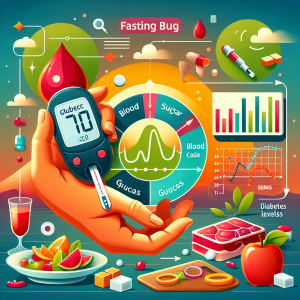Introduction
Managing blood sugar levels is crucial for individuals with high blood sugar. One effective way to regulate blood sugar is by incorporating fat burning vegetables into the meal plan. These vegetables not only help in managing blood sugar levels but also offer numerous health benefits. In this article, we will explore the power of fat burning vegetables and how they can be included in your daily diet.
Understanding Blood Sugar Regulation
Blood sugar regulation plays a vital role in maintaining overall health. When blood sugar levels are consistently high, it can lead to various health complications, including diabetes. According to the World Health Organization, approximately 422 million people worldwide have diabetes, and high blood sugar levels contribute to this alarming statistic.
High blood sugar levels can have a detrimental impact on the body. It can affect the functioning of organs, increase the risk of heart disease, and cause nerve damage. Therefore, it is essential to take proactive measures to regulate blood sugar levels and prevent these complications.
The Power of Fat Burning Vegetables
Fat burning vegetables are a valuable addition to a meal plan aimed at managing blood sugar levels. These vegetables are low in calories and high in fiber, which helps in stabilizing blood sugar levels. Additionally, they are packed with essential nutrients, vitamins, and minerals that support overall health.
Here are some top fat burning vegetables that can aid in blood sugar regulation:
| Vegetable | Nutritional Benefits |
|---|---|
| Broccoli | Rich in fiber, vitamin C, and antioxidants. Helps in reducing insulin resistance. |
| Spinach | High in magnesium, which improves insulin sensitivity. Also a good source of iron and vitamins A and C. |
| Kale | Loaded with antioxidants, fiber, and vitamins A, C, and K. Supports blood sugar control. |
| Brussels Sprouts | Contain compounds that enhance insulin sensitivity. Rich in fiber and vitamin C. |
| Green Beans | Low in calories and high in fiber. Helps in regulating blood sugar levels. |
These vegetables have a low glycemic index, which means they have a minimal impact on blood sugar levels. Including them in your diet can help in maintaining stable blood sugar levels and promoting overall well-being.
Incorporating Fat Burning Vegetables into Your Meal Plan
Now that we understand the benefits of fat burning vegetables, let’s explore how to incorporate them into your daily meals:
- Add a variety of vegetables to your salads. Include a mix of leafy greens, such as spinach and kale, along with other colorful vegetables like bell peppers and tomatoes.
- Sauté or stir-fry vegetables like broccoli, Brussels sprouts, and green beans with a small amount of olive oil for a delicious and healthy side dish.
- Blend vegetables like spinach or kale into smoothies for a nutrient-packed start to your day.
- Roast vegetables like cauliflower, zucchini, and carrots with a sprinkle of herbs and spices for a flavorful and nutritious side dish.
- Experiment with vegetable-based soups and stews. Use a variety of vegetables to create a hearty and satisfying meal.
By incorporating fat burning vegetables into your meal plan, you can enjoy a wide range of flavors while reaping the benefits of blood sugar regulation and improved overall health.
Diabetes-Friendly Vegetables
For individuals with diabetes, certain vegetables are particularly beneficial in managing blood sugar levels. These vegetables have specific properties that help regulate blood sugar and provide additional health benefits:
- Bitter Melon: Contains compounds that mimic the action of insulin, helping to lower blood sugar levels.
- Cauliflower: Rich in fiber and low in carbohydrates, making it an excellent choice for individuals with diabetes.
- Cabbage: Contains a compound called sulforaphane, which has been shown to improve blood sugar control.
- Asparagus: High in fiber and low in calories, making it a diabetes-friendly vegetable that supports blood sugar regulation.
- Onions: Rich in antioxidants and compounds that help lower blood sugar levels.
These vegetables can be incorporated into various recipes and enjoyed as part of a balanced meal plan for individuals with diabetes.
Conclusion
Incorporating fat burning vegetables into your meal plan is a smart and effective way to regulate blood sugar levels. By including vegetables like broccoli, spinach, kale, Brussels sprouts, and green beans, you can enjoy a wide range of flavors while supporting your overall health. For individuals with diabetes, specific vegetables like bitter melon, cauliflower, cabbage, asparagus, and onions offer additional benefits in blood sugar control. Experiment with different vegetables and recipes to find what works best for you, and enjoy the long-term benefits of maintaining stable blood sugar levels through a balanced diet.
You may also like:
>> 9 Healty Vegetables That Can Help You Burn Fat
>> This Liver-Hormone Burns Fat 20 Hours a Day
>> This Remedy Helped Thousands Balance Blood Sugar Levels
























